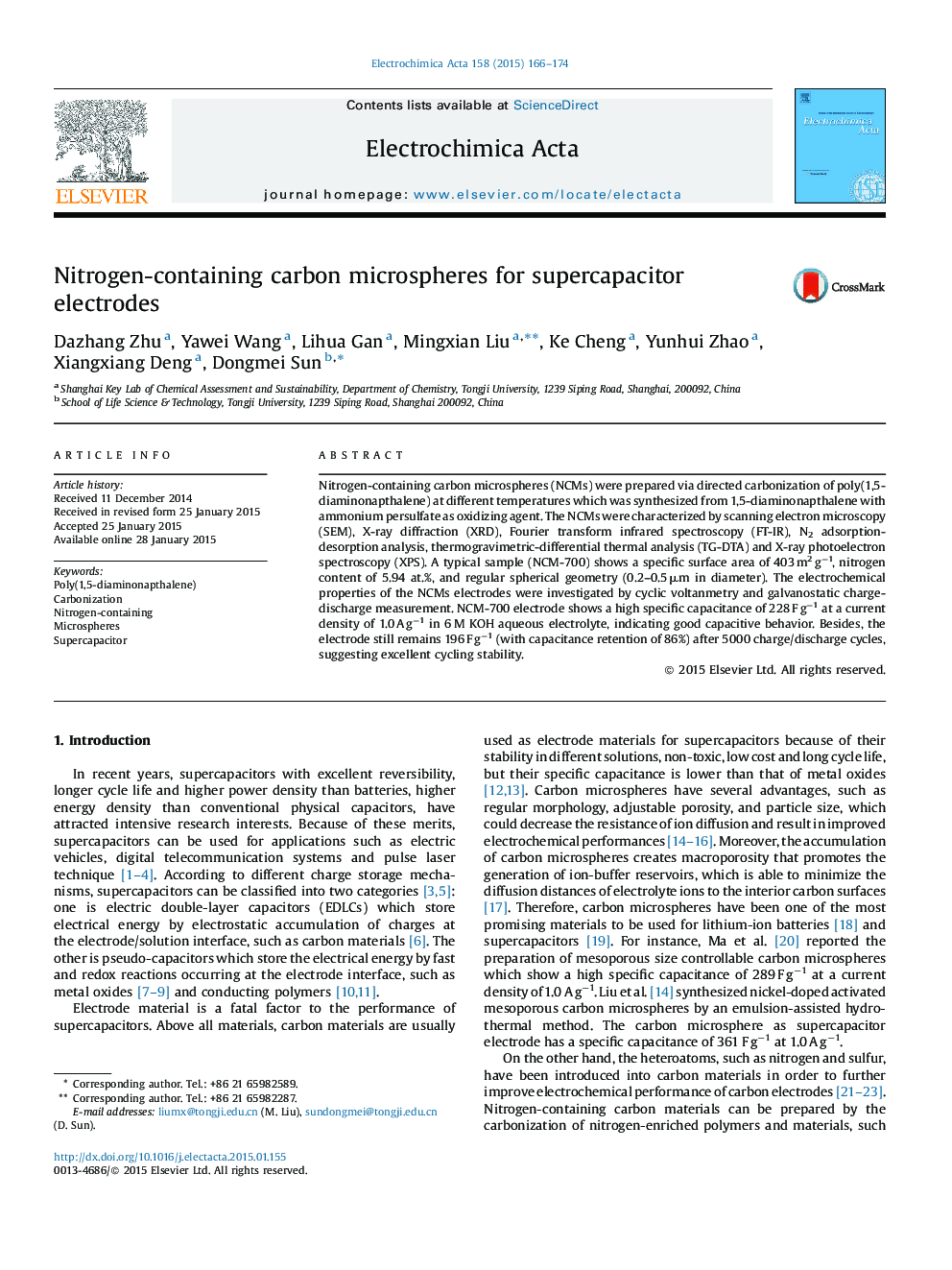| Article ID | Journal | Published Year | Pages | File Type |
|---|---|---|---|---|
| 184453 | Electrochimica Acta | 2015 | 9 Pages |
•A simple oxidative polymerization method was used to fabricate poly(1,5-diaminonapthalene) microsphere.•Poly(1,5-diaminonapthalene) was the first time to be used in preparing nitrogen-containing carbon microspheres (NCMs).•The preparations of poly(1,5-diaminonapthalene) and NCMs are simple and fast.•NCMs carbonized from poly(1,5-diaminonapthalene) exhibit high specific capacitance.
ABSTRACTNitrogen-containing carbon microspheres (NCMs) were prepared via directed carbonization of poly(1,5-diaminonapthalene) at different temperatures which was synthesized from 1,5-diaminonapthalene with ammonium persulfate as oxidizing agent. The NCMs were characterized by scanning electron microscopy (SEM), X-ray diffraction (XRD), Fourier transform infrared spectroscopy (FT-IR), N2 adsorption-desorption analysis, thermogravimetric-differential thermal analysis (TG-DTA) and X-ray photoelectron spectroscopy (XPS). A typical sample (NCM-700) shows a specific surface area of 403 m2 g−1, nitrogen content of 5.94 at.%, and regular spherical geometry (0.2–0.5 μm in diameter). The electrochemical properties of the NCMs electrodes were investigated by cyclic voltanmetry and galvanostatic charge-discharge measurement. NCM-700 electrode shows a high specific capacitance of 228 F g−1 at a current density of 1.0 A g−1 in 6 M KOH aqueous electrolyte, indicating good capacitive behavior. Besides, the electrode still remains 196 F g−1 (with capacitance retention of 86%) after 5000 charge/discharge cycles, suggesting excellent cycling stability.
